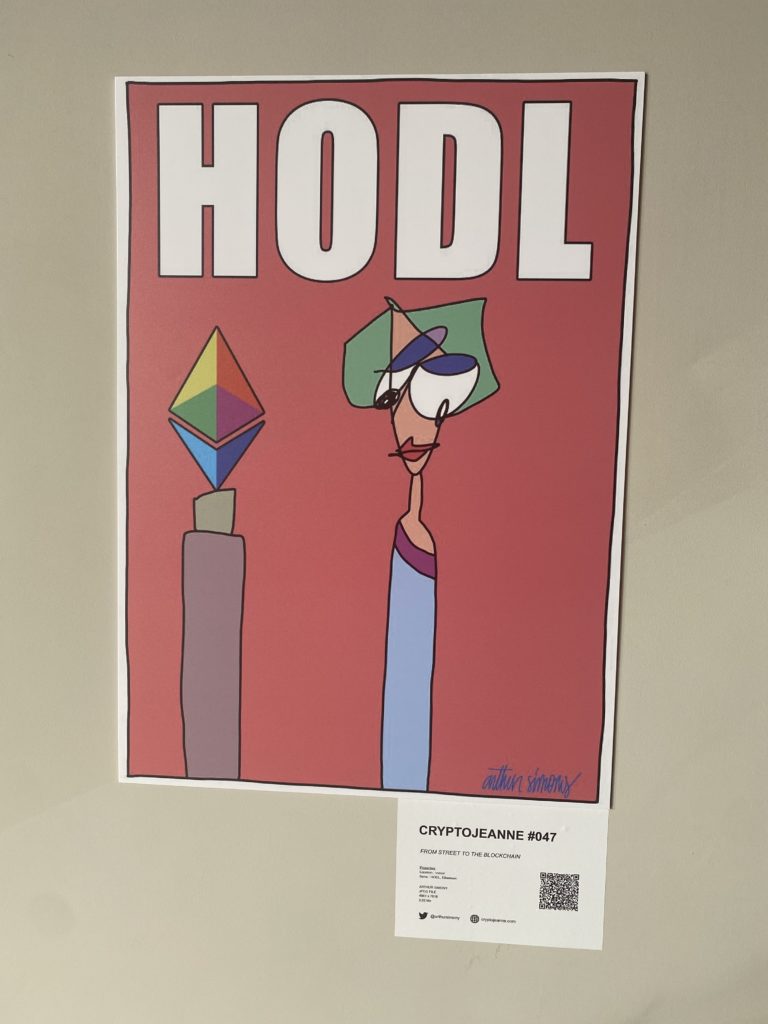EthCC has grown rapidly over the last four years, as the Ethereum Network scales and more members are brought into the Ethereum community. There’s not just the official conference this week in Paris but also a long list of side events, parties, and workshops. On the first night of EthCC [4], there were parties hosted by both established and emerging players in the space. Ethereum software company ConsenSys hosted a cocktail party, and Layer 2 proof-of-stake network SKALE invited guests on a private yacht party, complete with an hour-long cruise (and dance party on the Seine). With so much energy and excitement in the Paris summer air, many attendees started Day 2 of the conference in a Defi Hangover. Despite the somewhat slow start to the day (many arrived a few hours after the conference officially began), the Maison de la Mutualite was packed by the time Vitalik Buterin delivered his keynote on the state of Ethereum.
Here are a few event highlights from EthCC day two:
THINGS THAT MATTER OUTSIDE OF DEFI
Ethereum co-founder Vitalik Buterin was in good spirits as he took the main stage to talk about the Ethereum network’s milestones and future plans. While DeFi has helped fuel the adoption of cryptocurrency in both the public and private sector, Buterin made it clear that it was time to move beyond DeFi. His speech began by re-iterating the fact that the initial vision of Ethereum and many cryptocurrencies has always been to take “decentralization, trust, minimization and mechanism design experimentation beyond finance. However, five years into Ethereum, DeFi still defines the ecosystem.
So what’s the strategy to diversify the applications that utilize the Ethereum ecosystem? Of course, there are now NFTs, which include many different types of digital assets, including Etheruem Name Service (ENS) names. However, Vitalik unveiled a vision beyond NFTs and DeFi, suggesting that the next goal is to build decentralized social media on the Ethereum Blockchain.
Buterin suggested that crypto-tech is actually well equipped to deal with many of the problems that are prevalent in today’s existing social media. These issues include arbitrary censorship and engagement that’s misaligned with quality.
Features of crypto-tech that can aid social media include: “credible neutrality, censorship resistance, and a built-in economics layer which makes it easier to handle mechanism design.” Decentralized social media is not entirely new; there are already networks such as Bitclout and Hive. However, there is still room for experimentation in this realm, and some suggestions given by Buterin include decentralized content, adding prediction market-like mechanisms, and community-focused influences.
There was also talk of Ethereum logins, retroactive public goods funding, and “decentralized daddies.” Speaking to a room of Ethereum ecosystem natives, the talk felt more like an incentive to go out and not only build but to go out and build differently.
NFT ART ON DISPLAY
Another highlight of day two was the digital art that was on display in the space. A clear choice was made (maybe to protect assets) to display all of the art as static frames, printed out on weighted, oversized poster board. While this limited the ability to interact in a deeper way, each display did include a link to the artist’s work, as well as social media links. A few highlights from the EthCC [4] collection included:
“Just i” by Alotta Money
According to Twitter, Alotta Money is a “Crypto Artist, Voxels Architect, Photoshop Priest, VR & AR Maximalist, NFT Machine & Most Humble Visual Orgasm Provider in the Space.” Based in France; Alotta Money plays with elements of surrealism, pop culture, and historical reference to tell whimsical yet thought-provoking narratives. “Just I” hints at what comes after AI, which is also likely a nod to the incoming web 3.0.
Landed at the EthCC @DidierRA1 @emmavolou_ @orabelart @money_alotta pic.twitter.com/N1pnNrwMos
— Jæn (@jaendotart) July 19, 2021

Marseilles-based illustrator and graphic designer Orabelart showcased her piece “ Oasis.” The artwork refers to the “shelter we all have in ourselves. It refers to deep inner peace, where we can find comfort, inspiration, and creativity. Oracle uses bold, vivid “emotional” colors and textures in her work, According to press notes, “she aims to glorify the female figure within her pieces and to tell poetic stories through surrealistic environments.” Orabel’s first NFT collection was minted on Rarible. “Oasis” was sold as a 1 of 1 edition on KnownOrigin.
ETHPUNK by Didier RA
ETHPUNK is the second portrait in Didier RA’s collection of famous people in the crypto world, featuring Ethereum co-founder Vitalik Buterin. The piece was initially sold for 1 ETH but is now listed on OpenSea for 2.5 ETH. Didier RA is a sculptor, tattoo, and crypto artist. They are also the founder of NftAD, a collective of traditional artists who are entering into the NFT space.
2nd portrait of famous people in the crypto word in progress. ETHPUNK.
What do you think about that friends?#nft #cryptoart #raredigitalart #VitalikButerin pic.twitter.com/ZQQvKKvUlW— Didier RA (@DidierRA1) November 20, 2020

Currently listed on OpenSea for 2 ETH, CryptoJeanne #47 is part of a more extensive collection of stylized pieces from artist Arthur Simony. From street to the blockchain is Crypto Jeanne’s origin story, and the protagonist can also be found IRL on the streets of Paris.
This coming Monday, we’ll dive into day three of the conference, which included insightful conversations about the regulation of crypto-assets and NFTs in the European Union. This was Origin reporting live from ETHCC Paris 2021; thank you for reading.



